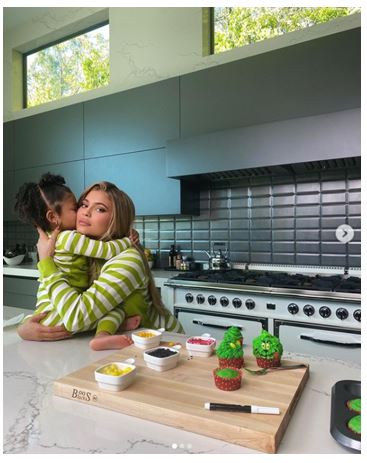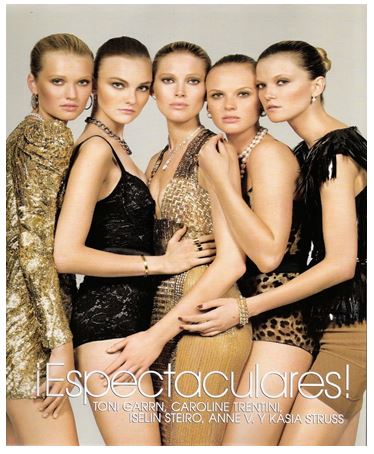Lifestyle media is a branch of media that covers everything from food to beauty products and disseminates ideas regarding taste and lifestyle. Different media products such as texts in magazines and social media include various topics like shopping, self-development, fashion, or cooking. It operates in the backstage arena of social performance articulated by Erving Goffman, showing us examples of proper daily life activities that were intimate and authentic earlier (Maureen, 2018, p. 3). With the advent of social media platforms, especially Instagram, fashion media has become diverse and more powerful. Modern influencers seize the opportunity to share their lifestyle and taste ideas with readers instantly and in various digital forms. It reinforced the effect mass media had on consumers’ minds and their everyday choices. To some extent, it shapes our identity construction, the way we live, evaluates and express our tastes when interacting with others. This essay will further discuss how media influences our identity and shapes our lifestyle regarding fashion.
To begin with, everybody wants to be outside the group of “others” following fashion trends. Individuals tend to stand out positively or at least conform to temporary clothing standards. Popular fashion magazines, Instagram accounts, or YouTube blogs influence what we want and ultimately purchase and wear. They function as trendsetters appealing to our desires, self-identity, and emotions. Colin Campbell introduced the concept of imaginative hedonism that sustains modern consumer capitalism (Maureen, 2018, p. 10). It consists of desire and emotions where pleasure from the latter is the central driver. People apply their creativity and imagination to create mental images for their pleasure. Maureen (2018) explains that pictures of perfect models or dresses in lifestyle media products trigger this imaginative hedonism by providing individuals with instruction, inspiration, and ways to acquire those items. It also shows that banal daily issues can be solved by purchasing fancy consumer products and creating an intimate public.
To my mind, this concept explains why people who have their attitudes and style preferences still turn to trends. Sometimes I feel a similar way when looking through fashion magazines or Instagram feed. Ideal photos make me wonder how it would be to wear similar clothes, accessories or consider getting a tattoo. Images of public appreciation of my new look elucidate emotions of pleasure and self-esteem. For that reason, my consumer decisions are often shaped by lifestyle media, especially regarding brand selection.
I also observed that many of my peers are massive fans of lifestyle celebrities who reveal their everyday and domestic life on social media. For instance, Kylie Jenner, a trendy American model and media personality, always posts beautiful photos representing her femininity, family, or important events. The most peculiar part is that her account is full of posts that blend her mother and fashion expert roles.

For instance, the screenshot above (Figure 1) depicts a happy and loving mother behind the kitchen counter who hugs her daughter while wearing nice striped green sweaters. The Grinch cupcakes on the chopping board reaffirm the sense of family and domesticity among her audience. At the same time, it was made to promote her new cosmetics collection created especially for the holiday period. Although they are at home, the picture is polished and almost perfect without odd things or mess everyone has in the kitchen right after cooking. From the one side, the post represents the intimacy of domesticity and the simple life of a loving mother full of ordinary things like baking cupcakes. From the other side, every element of the scene is intentionally idealized.
Such representation of daily life is highly compelling due to the already mentioned lifestyle’s fantasies it evokes. Simple depictions of wealthy life provide less inspiration to the audience than beautiful images of domesticity and ordinariness. Both concepts characterize lifestyle media in general that depicts socially and aesthetically ideal lifestyles rather than documents real life with its imperfections (Matheson, 2007). Everyday life here is scripted, styled, and related to branded goods shaping the audience’s view on ideal domesticity. Instead of documenting the real things, the media can construct its ordinary reality.
The performative dimension of class also should be considered. Although Jenner’s posts do not directly express her wealth, they provide instructions and examples of behavior or types of outfits that can bring one closer to the same class. Bell and Hollow (2005) explain that lifestyle media tend to establish and circulate the rules by which we judge ourselves and others. The notions of transformation associated with this kind of media are also could be seen in promoted goods. If one follows the example and buys suggested dress or cosmetics, he/she may enter the same class. In this case, wealth, income, origin, or other important social factors are downplayed or ignored. Instead, class mobility here is possible through the acquisition of suggested taste resulting from the self-improvement process. Under this theory, Kylie Jenner is the cultural intermediary who guides her audience, including some of my colleagues.
I should also consider the role of conventional mass media such as fashion magazines. For instance, as one of the fashion media leaders worldwide, Vogue has a tremendous effect on global trends and its readers. Hatlestad (2018) spotted that it is often challenging to separate one cover girl from another due to the striking similarity of their appearances (Figure 2: only light-skinned, thin, and beautiful women). Some readers and activists criticize the publisher for being insensitive to real everyday women and setting unrealistic and unattainable standards instead.

Young readers who do not fit it may feel inferior and out of the privileged class. It also encourages them to follow trends, not lag, and be as close as possible to the elitist club. In her study, Twigg (2018, p. 16) revealed that modern magazines empower older women to experience new freedoms and new opportunities. However, their femininity should be on the accepted level to ensure their appearance conforms to the cultural norms and the requirements to be fashionable. Although Vogue promotes following the mainstream and remaining active, it downplays such issues as accepting looking old as a form of being older. I believe it has a similar effect on my peers and youth as a whole and at least partially shapes our fashion preferences.
To conclude, lifestyle media usually creates consumer-oriented ideals, sets standards, and establishes rules to judge oneself and others. For that reason, fashion magazines or Instagrammers work as trendsetters for their readers and audiences, inspiring them to evaluate and modify their everyday lives to enter the higher class. The main problem is that it often downplays other options and social factors contributing to limited variety and social inclusiveness. Desire and imagination triggered by perfect depictions of ordinary things and domesticity shape our preferences and make us follow trends. Thus, I also often choose a trendier brand over others, even if it is more practical and cheaper. I agree that my fashion lifestyle is partially produced and maintained through the media I consume.
References
Bell, D. and Hollows, J. (2005) Ordinary lifestyles: Popular media, consumption and taste. New York: Open University Press.
Hatlestad, M. (2018) ‘Is Vogue’s influence positive or negative?’. Medium.
kyliejenner. (2020) We are back making Grinch cupcakes…
Matheson, S. A. (2007) ‘The cultural politics of Wife Swap: Taste, lifestyle media, and the American family’, Film & History: An Interdisciplinary Journal of Film and Television Studies, 37(2), pp. 33-47. Web.
Maureen, E. R. (2018) Lifestyle media in American culture: Gender, class, and the politics of ordinariness. New York: Routledge.
Twigg, J. (2018) ‘Fashion, the media and age: How women’s magazines use fashion to negotiate age identities’, European Journal of Cultural Studies, 21(3), pp. 334-348. Web.